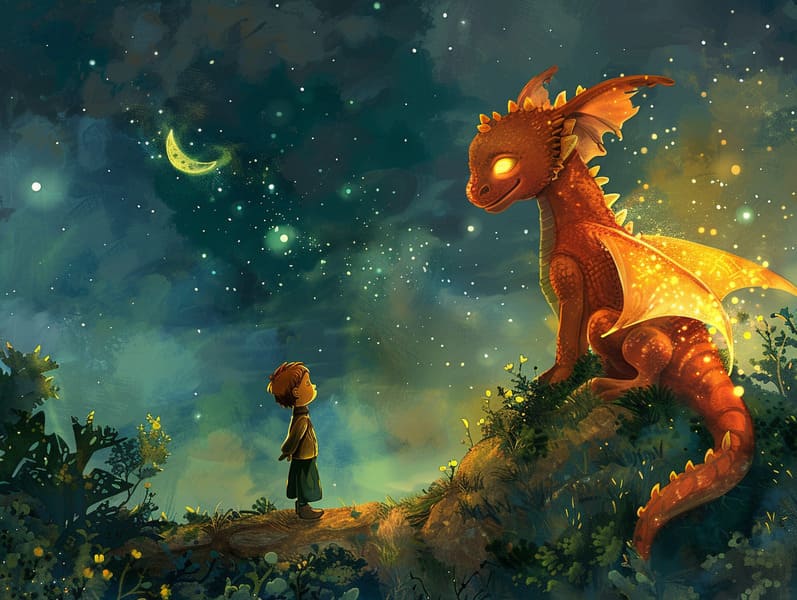
Fairy tales have enduring presence. These narratives have been told from one generation to the next centuries before they were ever recorded. They developed from a variety of societies, including Middle Eastern traditions. They were initially transmitted among older generations, often carrying themes and messages aligned with the societal norms and beliefs of the time.
The Grimm brothers, the two Grimm brothers, were among the first to gather many of these beloved stories. Their collection, "Grimm's Children's Stories," included tales like "The Story of Cinderella," "Hansel and Grethel," and "Snow White," which have since become pillars in the world of classic fairy tales. Similarly, Hans Andersen's delightful tales, such as "The Mermaid's Tale," and "The Little Duckling," have floated into hearts worldwide, solidifying their place in the pantheon of treasured fairy tales.
Despite their historical roots, classic fairy tales remain as meaningful as ever, especially as children's night stories. These fantastical tales are now available in different formats, including artistically illustrated books, delightful animations, and digital fairy tales.
Their lasting presence can be traced to several fascinating points:
Crucial Morals: Old fairy tales often share important moral lessons. Stories like "The Story of the Boy Who Cried Wolf" teach the benefit of integrity, while "The Tale of the Tortoise and the Hare" demonstrate the virtues of determination and unpretentiousness. These stories offer young readers clear distinctions between truth and falsehood, guiding their moral compass in a subtle yet impactful way.
Compassion and Knowledge: Classic fairy tales frequently feature individuals facing difficulties and adversities, inciting children to connect with their struggles and encourage their triumphs. For instance, "Beauty and Her Beast" teaches us the significance of appreciating inner worth to understand the inner spirit of a being, promoting warmth and insight.
Cultural Understanding: Many traditional fairy tales are interwoven with the cultural contexts from which they blossomed. Reading these stories can provide fascinating glimpses into different ways of life, developing a sense of world appreciation and recognition.
Imagination and Creativity: The fanciful elements in ancient fairy tales—mythical creatures—activate children’s fantasies. These stories take readers to fantasy realms, fostering creative dreams and a sense of excitement that continues a lifetime.
Traditional get more info fairy tales are not only delightful but also illuminating. They act as mesmerizing tools in advancing various cognitive and affective skills in kids. When ancient fairy tales are spoken out loud, they boost linguistic abilities by offering new language and detailed sentence structures. This practice also improves hearing abilities and attention span, as children listen intently, anticipating to see what happens next.
Furthermore, discussing the themes and characters of ancient fairy tales can strengthen thought processes and evaluative skills. Young readers are guided to see patterns, make predictions, and grasp cause and effect. These examinations also ease young readers speak out their thoughts and feelings, contributing to their emotional intelligence.
In today’s digital age, the proliferation of digital storybooks has made these fairy tales more available than ever. Websites and programs offer vast collections of traditional fairy tales that can be looked at or played anytime, anywhere. Fairy tales recited are particularly common, making available an captivating way for little ones to relish these magical stories. Audio stories and narrated videos transport characters and settings to life, often supplemented by whimsical background sounds and songs that boost the story journey.
The lasting allure of old fairy tales lies in their ability to shift to current times while sustaining their core values. Contemporary adaptations of these stories often introduce more representative protagonists and modern settings, making them familiar to today’s audience. However, the core values of valor, kindness, and righteousness remain unchanged, continuing to reach young readers of all ages.
Fairy tales also offer a sense of peace and familiarity. They present a ordered narrative with a obvious beginning, middle, and end, often coming to a close with the closure of conflicts and the triumph of goodness over badness. This regularity can be reassuring for kids, affording a sense of unchangeability in an unpredictable world.
Timeless fairy tales continue to charm and teach new generations, maintaining their fascination and value in modern society. As nighttime stories for kids, they bring a perfect blend of fascination and comprehension, encouraging moral values, empathy, and creativity. The prevalence of free fairy tales online and the commonness of fairy tales narrated warrant that these traditional stories remain accessible to new generations.
By upholding and distributing these stories, we continue to revere the rich tapestry of creativity and cultural heritage. Whether you are accessing a vividly illustrated book, delving into a electronic collection, or listening to an narrated book, the beauty of timeless fairy tales is always within reach. These fairy tales remind us of the unchanging influence of narratives and its ability to gather us across time and space.
Be it you are reading a gorgeously illustrated book, accessing a virtual library, or playing an narrated book, the fascination of children's fairy tales is always within reach.
These narratives emphasize of the continued ability of narratives and its ability to gather us across epochs and places, creating a bond that captivates and teaches alike.